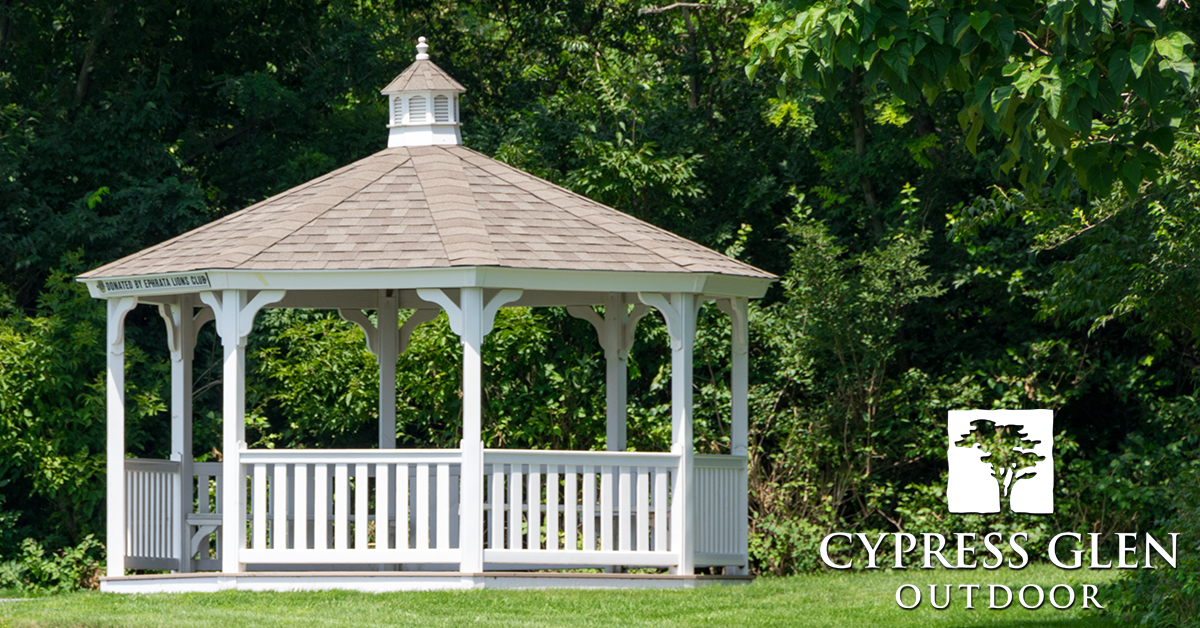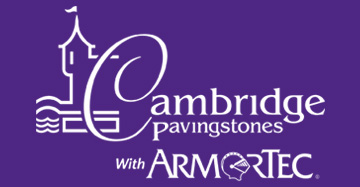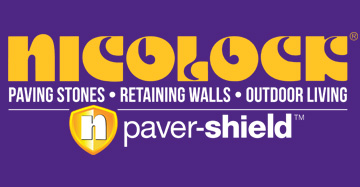
Gazebos as a concept dates back to ancient civilizations such as Rome, China, and Egypt. They were outdoor places where people practiced meditation, relaxed, and viewed nature. Today, their intended purpose is much the same.
What qualifies as a gazebo?
A gazebo is a freestanding structure with a solid roof commonly found in parks, gardens, or backyards. It has open sides and is traditionally hexagonal or octagonal, although it can be square or rectangular.
What is the difference between gazebos and pavilions?
By definition, a gazebo sounds similar to a pavilion, and in many ways, it is. But there are some distinguishing differences. They both have covered roofs and can be similar shapes, but not commonly. A pavilion is more extensive and intended to host grander events and more people.
Gazebos are more ornamental and small by design. They often have open sides but can have lattice or open walls covering some siding area. They host intimate gatherings with a few people and are used as a decorative element in an outdoor space.
Pavilions could be used to host weddings or music venues; a gazebo would have benches to seat a few people for a small group instead of masses.
Types of materials for gazebos
Gazebos need to be built from high-quality materials. Since they will be outside, they must withstand the elements. This includes rain, wind, and sun in our area, so weather-resistant materials suitable for all these factors are essential.
Wood is the most common material when we think of a gazebo. Cedar is excellent because of its natural resistance to bugs and decay. This is also why many people have cedar chests or closets to protect valuables and clothes. However, in this case, cedar offers protection, a wonderful smell, and a beautiful color.
Redwood has many of the same properties as cedar, mainly a natural deterrent to decay and bugs. But the most significant difference is Redwood’s stunning red coloring.
Teak, mahogany, and ipe are durable and weather-resistant tropical woods that can also be used. However, these woods tend to be more expensive.
The most economical wood choice is pressure-treated pine. It is cost-effective and, when appropriately maintained, also protects against the elements, rot, and insects.
Now, just because wood is the traditional choice, it is not the only one when it comes to building materials for gazebos. Metal, like aluminum or steel, creates a more modern and industrial look. Vinyl and PVC are easily maintained, relatively inexpensive, and can be modified to a variety of color and styling options.
Installing gazebos
Your gazebo should be safe and sturdy, as well as a quiet and relaxing space to enjoy nature. You should consider location, size, and sunlight. Do you need permits or approval from the homeowner association? Another critical factor is the foundation. You need a sturdy base on solid, level ground. Additionally, quality weather-resistant materials are a must for this outdoor structure.
When choosing the best materials and solid structure, you want a professional who can do all the heavy lifting. Let Cypress Glen Outdoor build the backyard you’ve been dreaming of!

Our Latest Reviews
High Quality Pavers and Decking








